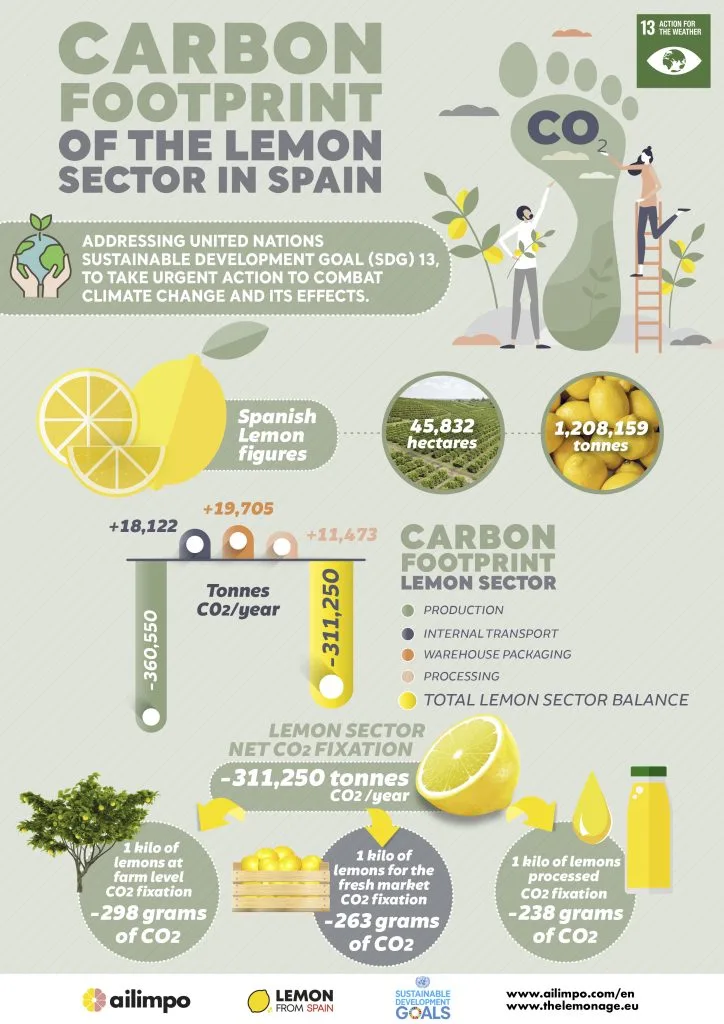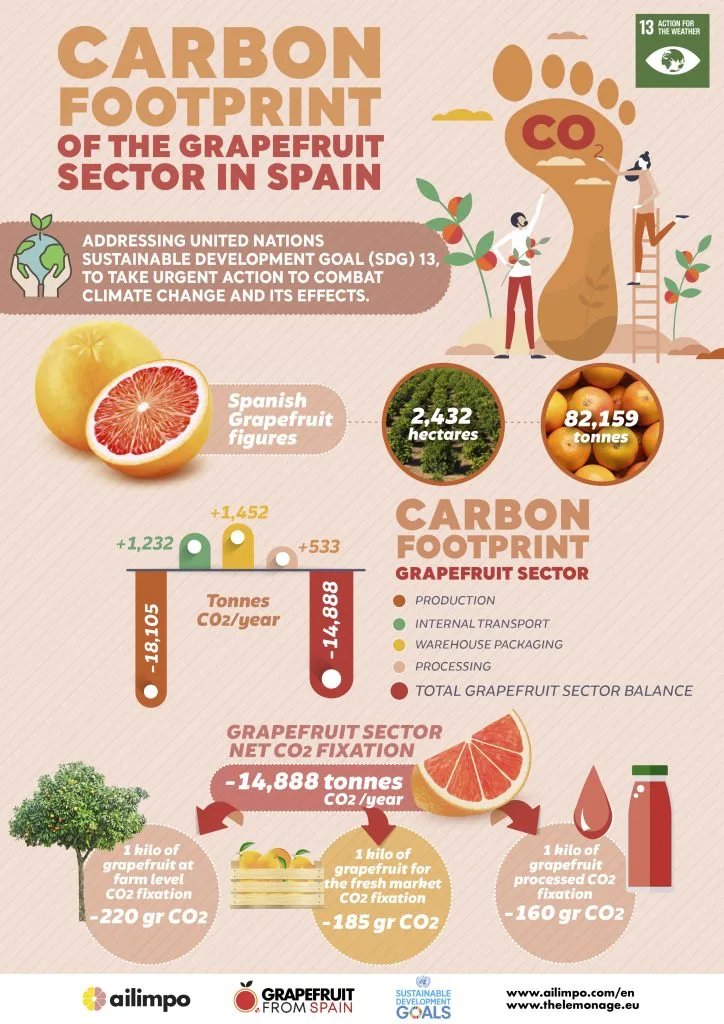Carbon footprint of the lemon and grapefruit sector in Spain
In recent times, a new concept has emerged in supplier-customer-consumer relations in the agri-food sector: the need and requirement to be SUSTAINABLE. This is a new work and relationship approach throughout the supply chain.
In 2015, the UN adopted the 2030 Agenda for Sustainable Development. This is an opportunity for countries and their societies to embark on a new path to improve the lives of all, while leaving no one behind. The Agenda has 17 Sustainable Development Goals (SDGs), ranging from eliminating poverty to combating climate change, education, women’s equality, environmental protection and the design of our cities.
According to the Sectoral Guide on SDGs in the Agri-Food Sector published by the Global Compact Spanish Network (UN GLOBAL COMPACT), in relation to the Climate Action Target, the challenge identified in our country is to promote the calculation and reduction of the environmental footprint, with the main indicator being the quantification of the greenhouse gases generated by the sector (CARBON FOOTPRINT).
The calculation of the environmental footprint of our activity, and in this case of the Carbon Footprint, is part of the sustainability policy of the AILIMPO interbranch association in the environmental area as well as contributing to UN Sustainable Development Goal (SDG) number 13, on urgent measures to combat climate change and its effects.
Carbon footprint of the lemon sector in Spain
According to MAPA data, 45,832 hectares of lemons were cultivated in 2019. Of these, 7,117 are organically farmed. According to AILIMPO data for the 2019/20 season, 1,208,159 tonnes were be produced.
In the 2019/2020 season, a total of 252,167 tonnes of lemons were sent to processing, while 910,468 tonnes went to the fresh market. The main destination for fresh produce was EU countries, followed by the domestic market and non-EU countries.
Spain’s lemon plantations have a large capacity to capture atmospheric CO2. As a result, the net fixation of the crop amounts to 360,550 tonnes of CO2 per year.
Although the sector emits CO2 in the course of its business at an amount of 49,300 tonnes of CO2 (18,122 during transport, 19,705 in handling and packaging warehouses and 11,473 in processing plants), we conclude that its net carbon footprint is 311,250 tonnes of CO2 per year.
Therefore, the lemon sector in our country actively contributes to the fight against climate change by being a real carbon sink.
In the following links you can download both the report prepared by AILIMPO, as well as the explanatory infographics in different formats:

Carbon footprint of the grapefruit sector in Spain
According to MAPA data, 2,432 hectares of grapefruits were cultivated in 2019. Of these, 251 are organically farmed. According to AILIMPO data for the 2019/20 season, 82,159 tonnes were be produced.
In the 2019/2020 season, a total of 11,702 tonnes of grapefruits were sent to processing, while 67,102 tonnes went to the fresh market. The main destination for fresh produce was EU countries, followed by the domestic market and non-EU countries.
Spain’s grapefruit plantations have a large capacity to capture atmospheric CO2. As a result, the net fixation of the crop amounts to 18,105 tonnes of CO2 per year.
Although the sector emits CO2 in the course of its business at an amount of 3,217 tonnes of CO2 (1,232 during transport, 1,452 in handling and packaging warehouses and 533 in processing plants), we conclude that its net carbon footprint is 14,888 tonnes of CO2 per year.
Therefore, the grapefruit sector in our country actively contributes to the fight against climate change by being a real carbon sink.
In the following links you can download both the report prepared by AILIMPO, as well as the explanatory infographics in different formats:
Spanish Grapefruit Sector Report.

